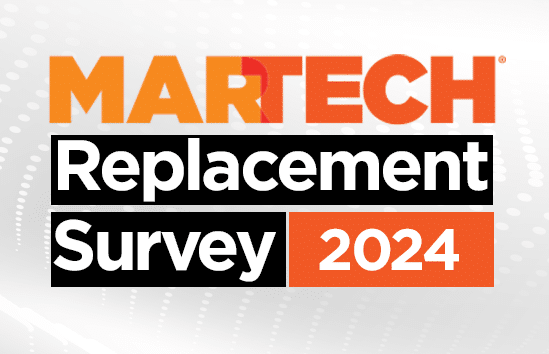
Marketers gathered in New York last week to share strategies and gains in making their stacks composable. The MACH Alliance hosted MACH THREE, a two-day event that welcomed over 600 attendees. Representatives from IKEA, Mars Wrigley, Nieman Marcus Group, Abbot and other big organizations spoke about the change in technology and company culture needed to support a transition to composable architecture.
About five years ago Mars Wrigley took its first steps toward building a composable, flexible stack. This was before there was a MACH Alliance to go to for guidance.
MACH mindset
The MACH Alliance is a nonprofit organization formed in 2020 to promote marketing technology and practices that fit into composable, modular systems. “MACH” is an acronym for the design principles behind this technology — microservices, API-first, cloud-native SaaS and headless. These design principles offer an alternative to large all-in-one vendors and aim at supporting a more fluid marketing organization.
MACH Alliance certification standards are applied to independent vendors and service providers. Its membership includes 49 certified independent software vendors and 23 start-up vendors. On the consultancy and service provider side, roughly 30 Certified Integrators (CI) or Global Certified Integrators (GCIs) are members of the alliance.
Dig deeper: The truth behind martech stack composability
Mars’ focus was initially on building a new ecommerce platform for its iconic M&M brand. Marketing also adopted agile practices. As a result, the organization no longer depends on a single, all-in-one vendor, or a “waterfall” method of carrying out marketing and business processes.
M&M’s ERP and commerce journey
“At M&M’s we have both the massive brand play with consumers and mass retail, and we also have direct-to-consumer and mms.com, where it’s a commerce business as well,” said Kyle Barz, director of global retail and ecommerce technology at Mars Wrigley, in an exclusive interview with MarTech. “But in addition to commerce, we focus on having very strong content and creating a sense of community around the brand.”
Barz has been with Mars for 24 years. One of the most public-facing innovations for M&M’s in his time has been the rollout of M&M’s stores in Las Vegas, New York and other major cities worldwide.
“I really think we were one of the pioneers in creating this concept of ‘retail-tainment,’ with the first M&M’s store in Vegas, where the consumer can get a more personal experience with the brand. Now fast-forward all these years, almost every brand is trying to figure out how they can create that personal one-on-one connection, and make it personalized, make it about the experience of interacting with the brand.”
Mars is applying MACH principles to enterprise resource planning (ERP). The result is a nimble connection between manufacturing, supply chain and automation that drives new ways for customers to order and customize M&Ms. By using many integrated tools for these processes, Mars can regularly update its stack and avoid a doomsday scenario where a single large vendor ends its service. For instance, SAP has scheduled end of life for the Business Suite 7 ERP in 2027.
“In the front office, we wanted to move at a much faster pace because the consumer’s expectations are always changing, and so we need to be able to evolve,” said Barz. “Historically, before we moved to MACH concepts, it was difficult (to evolve) because we had limitations on what the back ends would allow us to do. That tight coupling slowed down our pace of innovation. Now, we went down this road of differentiating the more consumer-facing architecture, and now we’re working on the back-office architecture to innovate faster in more strategic areas.”
Previously on the back end, Mars Wrigley used a single large ERP “that did everything for everyone, and wasn’t that good at everything,” Barz said. He brought his team together and targeted specific processes where innovation was needed and looked to fill those needs with new tools. “We separated those out from our core ERP system, and now the core ERP becomes more just about the financials and about inventory, where the pace of change doesn’t need to be as quick. And the closer we get to the consumer (in the front office), we’re allowing more innovation to happen much more quickly.”
Adopting the MACH mindset with ecommerce
Five years ago, Mars Wrigley was re-platforming M&M’s website and considering other brands for ecommerce.
“Historically, all these brands would have to go off and build their own thing,” said Barz, “or they would have to go to something like Shopify. We weren’t really leveraging the scale of Mars and what we could build internally. Not to mention all the time it took to stand up an idea — to go from idea to execution, you’re talking at least a year.”
Separately, on the brand side, some Mars Wrigley brands were developing the strategy to build ecosystems around brands. For M&M’s this meant a mass-channel brand presence, owned retail stores and managing partnerships with other retailers, as well as with quick-service chains — for instance, the M&M’s McFlurry at McDonald’s.
“While we were building out the strategy around that, we really wanted to put dot-com at the center of it — more than just a commerce experience, a more robust content and community experience as well,” Barz said. “We looked at all the usual solutions like the Magentos and Salesforce Commerce Clouds of the world. We really thought about how this platform was going to extend into other channels — how, for instance, it could help drive an omnichannel experience between our physical stores and our digital stores, or potentially deploying an interactive experience in our customer stores.”
Barz and his team decided at this point that a composable architecture would be better than a single solution at supporting an omnichannel ecosystem like the one they envisioned for M&M’s.
At M&M’s stores, a special printer is used to personalize M&M’s for customers. Although it isn’t live yet, Barz aims to use the composable architecture at Mars to connect this in-store personalization with digital commerce. M&M’s also has many ways to customize online, but these services are a separate experience.
“Now using the power of composable and everything being set up as services, we’re extending those services to the personalization experience in the stores,” Barz explained. “Eventually, the same designer experience on the website will also be powering the store experience. This could do things like consistent pricing, or have the option not to do that — now at least we can control it centrally. Certainly all that consumer data we can begin to capture in in-store experiences, we can feed that all in the same backend marketing systems for engaging the consumer outside the store.”
At the time of Mars’ digital transformation, Barz was aware of only one other CPG brand that had made a similar transition. The company drew on consultancies and integration specialists to build their composable stack.
“It was quite the journey,” said Barz. “Even from a commercial and legal perspective, it’s much easier to engage with one vendor versus a multitude of vendors. At the time there was no MACH Alliance to try to put all these options together.”
Email:
See terms.
The post How M&M’s transformed ERP and commerce with composable architecture appeared first on MarTech.




